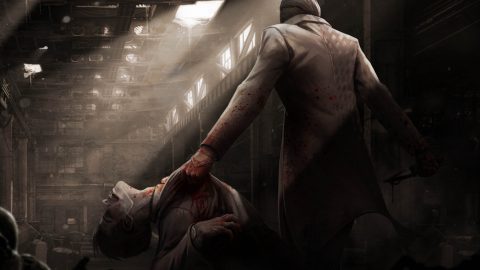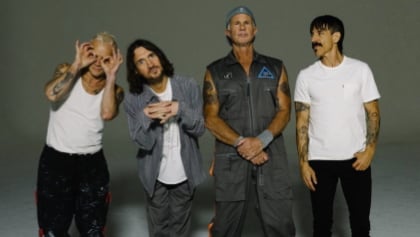
Long before Detroit: Become Human and Heavy Rain architects Quantic Dream became mired by an increasingly depressing series of accusations about its workplace attitudes, the French developer was considered something of an idealistic, if eccentric, creative entity. Quantic Dream was best known for crafting games which aligned to David Cage’s adult-aimed, narrative-driven and genre-shuffling ideals.
While these aims would lead the company, years on, to big-budget releases like noirish detective thriller Heavy Rain and the affecting, Elliot Page-starring Beyond: Two Souls, the company’s early work, particularly their 1999 debut, baffled many contemporary gamers.
Yet, there are those who still retain fond memories of the patchy yet oddly consuming The Nomad Soul – known as Omikron in North America. Some snapped it up on release, following years poring over press previews or hyped up by the anticipation-fuelling marketing campaign. Some sought it out for the involvement of David Bowie – then at the peak of his re-emergence as an internet revolution-predicting technological sage. Others, such as this writer, first entered the world of Omikron due to an inviting demo, bundled on one of PC Zone’s coverdiscs.
Though The Nomad Soul was predominantly a third-person action-adventure game, the game interspersed its runtime with first-person combat sequences, beat-em-up fisticuffs with an increasingly intimidating series of demons, and several brain-taxing puzzles. It also featured a mechanic whereby the player could switch ‘souls’ with up to 40 other inhabitable character models. A pretty meaty offering for the time.
Right from its opening moments, The Nomad Soul confounded the then-conventions. Hammering down the fourth wall and appealing directly to the player, the game’s (initial) protagonist, a police officer named Kay’l 669, implored you (yes, actually *you*) to enter his parallel world of Omikron in order to solve a vaguely-defined mystery and ultimately quell an existential threat. Following this unexpected intrusion into our drab late 90s bedrooms, the game proper began as we took possession of Kayl, and began to investigate a series of brutal serial killings.
Soon thrust into the futuristic, murky sprawl of the game’s first locale Anekbah, Bowie’s scene-setting ‘New Angels of Promise’ intercuts with a montage of the game’s angular NPCs navigating the city’s streets, the wheel-less Sliders gliding the roads as steam billows from the vents of oddly designed buildings. This intro vividly evoked, for arguably the first time, a real sense that we’d entered somewhere that was already living. That if we were to walk away from our screens, the city’s pulse would carry on deep within the dusty circuit boards of our PC.
This principle of the player being merely a small part of a huge, dynamically evolving world is now central to modern sandbox design. Be it Red Dead Redemption 2’s bustling Saint Denis, the seditious revolutions taking place across Assassin’s Creed: Unity’s Parisian streets, to even the ever-evolving planets of space-roamer No Man’s Sky. Worlds like these sell an illusion, that the experience isn’t structured around the player. These ecosystems have their own rhythms and concerns.
While this late 90’s-built game world is not comparable to modern sandboxes by any means (the city maps are relatively tiny, and there’s not a lot to actually *do* in the world of Omikron), The Nomad Soul was certainly the first time that this player had experienced a non-linear, freely explorable 3D world. It was as engaging a concept then as it remains today.
Another element that permeates Anekbah, and the myriad stylised city segments beyond, is David Bowie’s music. Alongside his soundtrack – consisting of several cuts that would later materialise on his 22nd studio LP ‘Hours’, Bowie himself acts in the game as two distinct characters. One a performer in a frequently appearing band which the player can watch perform around the city, and the other as revolutionary figurehead, Boz, who plays a central role in the plot towards the game’s conclusion, inspiring the overthrow of the world’s dystopian government.

While Bowie’s songs are largely solid, he and versatile guitarist Reeves Gabrels also composed several of the in-game cues and sequence-enhancing sections. Sadly, many of these lost Bowie-nuggets (such as the pulsing ‘Sha’armet Three’), are still completely unknown by a great many fans. The option to watch a 3D representation of Bowie and his band at several venues throughout Omikron suggested at the world’s vibrant pop culture.
Many of Bowie’s songs, such as the weary, acoustic led ‘Survive’, were written during a period of middle-aged self-reflection. This scans on to the world as well, as – devoid of emoting faces – the soundtrack overlays meaning, heart and motivation to The Nomad Soul’s populace.
Always at the vanguard of the now, Bowie’s overarching presence lends a feeling of curation and a stamp of endorsement to The Nomad Soul. It was, in essence, the late 90s equivalent of the former leper messiah’s giddy name-dropping of Lou Reed and the New York Dolls a few decades prior. By being such a central part of The Nomad Soul, Bowie was shining an eager light on the potential of this, still quite new, medium.
Though we’ve been quite misty-eyed so far, it’s fair to say that The Nomad Soul was, and remains, a deeply flawed game. The first-person sections were clunky, the narrative itself wasn’t particularly engaging, and reliant on familiar dystopian tropes (albeit, with demons). The portrayal of female characters veers into the uncomfortably overly sexualised from time-to-time, such as in an early part of the game when you attend a strip club to interview a scantily clad stripper. There’s also other troubling aspects of the game’s male-skewered morality – the option to sleep with Kay’l’s wife at the start of the game, when you know full well you’re not actually Kay’l, is one such problematic example.

Another issue was the game’s minimal sound design. While the Blade Runner-esque streets of Anekbah and Qualisar, the Middle Eastern Jaunpur and the canals of the Venice-inspired Lahoreh sported distinctive aesthetics, it seems the budget for aural ambience was swallowed up by Mr Bowie’s fee. The lack of bustling street noise, horns beeping or any general din of liveliness was a noticeable drawback even at the time.
Yet while the weight of its flaws (and an absence of a remaster) has seen The Nomad Soul become regarded as a patchy early experiment on the road towards greater things for Quantic Dream, and an occasional footnote in the numerous rundowns of David Bowie’s colossal canon, it’s a game with enough unique qualities, particularly in the atmosphere department, to cement it in the minds of those who sank their time into it.
For this player, the suspicion that the rhythms of The Nomad Soul’s characterful, Bowie-scored cities were going on perpetually within our computer, even after we’d switched it off, remains an enchanting memory. One of many from a decade that saw gaming’s boundaries pushed far beyond what many thought possible.
Omikron: The Nomad Soul is available to play on PC via Steam.
The post How the David Bowie-starring ‘The Nomad Soul’ imagined the idea of an open world appeared first on NME.











